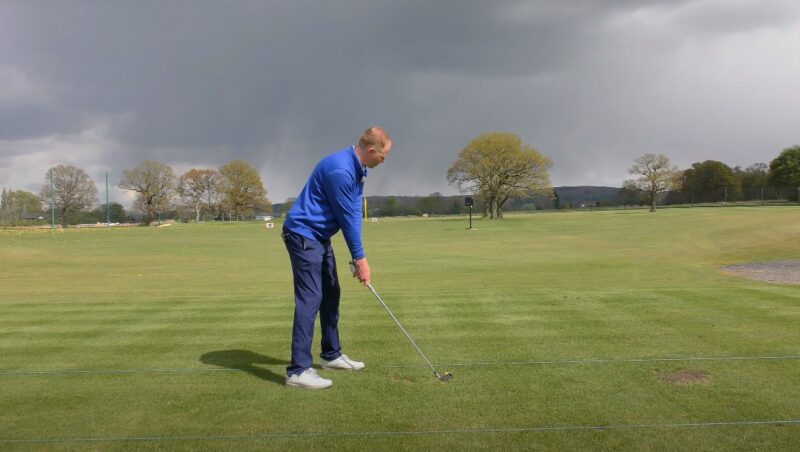Hitting a draw in golf is like having a secret weapon in your bag. It’s not just a way to show off but a technique that can significantly increase your distance and improve your overall game.
Today, I will explain how to achieve this coveted shot, breaking down the process into simple, actionable steps.
My focus will be on the modern ball flight laws, which offer a more straightforward and consistent approach compared to traditional methods.
Key Highlights
- Adjust Your Setup: Align your club face slightly right of the target and position your body further right to promote an inside-out swing path for a draw.
- Strengthen Your Grip: A slightly stronger grip can help ensure the club face is appropriately closed at impact to produce a draw.
- Practice Swing Path: Focus on achieving an inside-out swing path by adjusting your stance and concentrating on the lead arm’s movement.
- Be Patient and Adapt: Mastering a draw requires patience, practice, and the ability to adjust your technique based on feedback and conditions.
Draw in Golf in a Nutshell
A draw is a type of shot where, for right-handed players, the ball starts to the right of the target and gently curves back to the left.
This shot is highly sought after because it combines power with control, resulting in a low-spin, solid flight that maximizes distance.
Left-handed players will see the opposite effect, with the ball starting left and curving right.
Why Aim for a Draw?
- Increased Distance: Draws travel further thanks to their lower spin rates and solid contact.
- Improved Accuracy: The ball flight is more predictable, helping golfers avoid trouble on the course.
- Better Feel: Mastering the draw gives golfers a greater sense of control over their shots.
Setting Up for Success
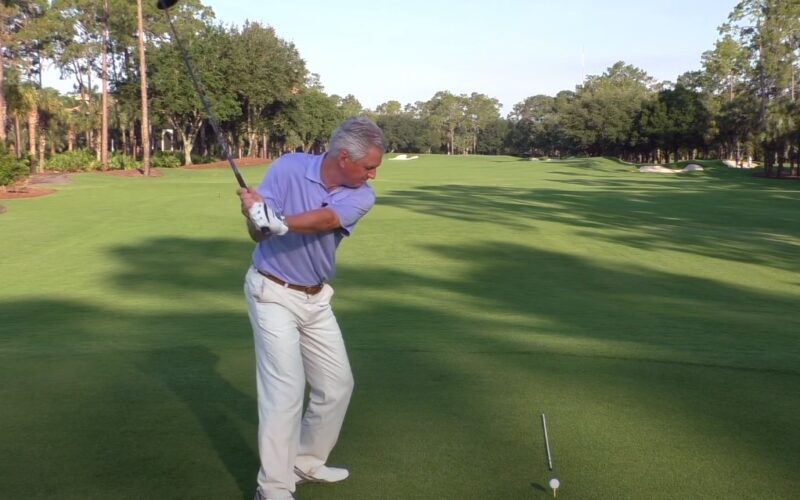
1. The Right Stance
Achieving a draw starts well before you swing. How you set up can greatly influence the ball’s flight path.
Here are the key adjustments:
- Club Face Alignment: Aim the club face slightly to the right of your target (for right-handed players).
- Body Alignment: Position your feet, hips, and shoulders further to the right than the club face. This setup encourages an inside-out swing path.
2. Grip and Shoulder Position
- Strengthen Your Grip: Rotate your hands slightly on the grip to strengthen it. This doesn’t mean squeezing harder but adjusting your hands to promote a closed club face at impact.
- Close Your Shoulders: Slightly close off your shoulders at address. This adjustment complements the inside-out swing path needed for a draw.
3. The Swing Path
For a draw, the magic happens in the swing path. You’re looking for an inside-to-out path, meaning the club moves inward on the downswing before moving outward through the ball.
Here’s how to achieve it:
- Focus on Your Lead Arm: Your lead arm’s trajectory is crucial. Imagine it moving in a way that encourages the club to follow an inside-to-out path.
- Drop Your Trail Foot Back: Slightly dropping your back foot can naturally open your stance, making it easier to achieve the desired swing path.
Mastering the Draw with Your Driver
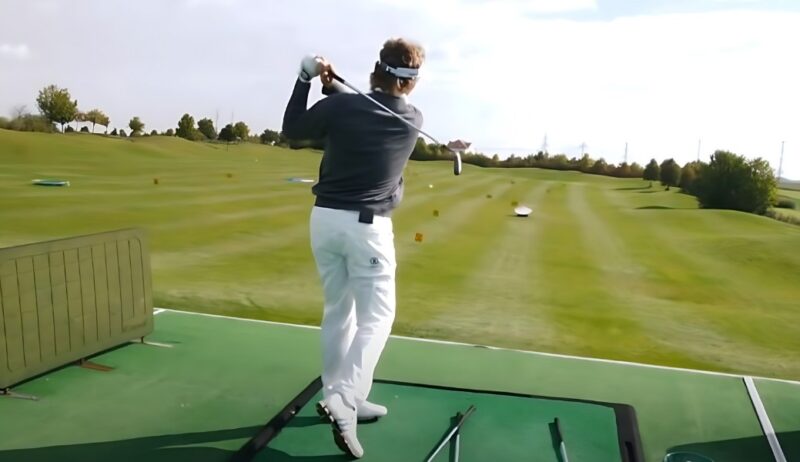
Drivers are notoriously tricky when it comes to shaping shots.
However, with a few tweaks, you can hit powerful draws off the tee.
- Control the Club Face: Ensure the club face is square to slightly closed at impact. This control is crucial for the desired right-to-left flight.
- Swing Path: Focus on a slightly inside-to-square path. Unlike with irons, subtlety is key to avoid overdoing the draw.
Irons and the Art of the Draw
Iron shots require a bit more finesse but follow similar principles.
- Swing Path and Rotation: With irons, emphasize your body’s rotation to promote the inside-out path rather than manipulating the shot with your arms and hands.
- Practice Makes Perfect: Irons are great for practicing draws, as the feedback on shot shape is immediate and clear. You can also pick up irons for seniors to make everything easier.
Fine-Tuning Your Technique
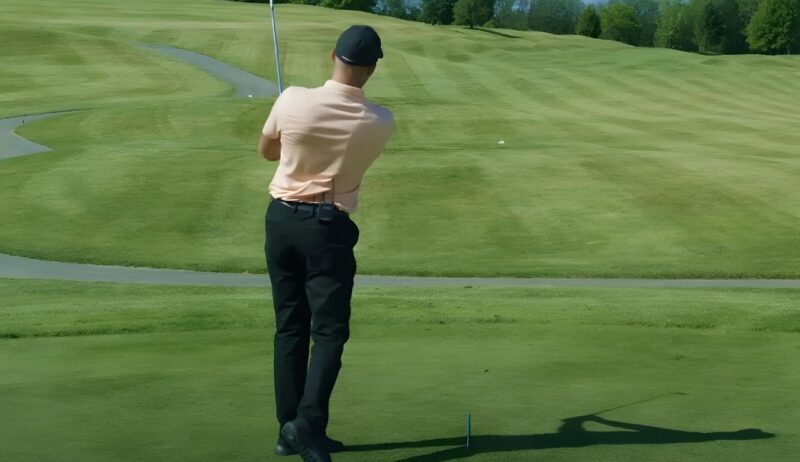
Improving your draw isn’t just about the big changes; it’s also in the details. Let’s look at some fine-tuning tips to perfect your draw.
Focus on Tempo
A smooth, consistent tempo helps ensure your swing path and club face alignment are correct at impact. Rushing your swing can lead to mistakes, especially with timing the rotation of your club face.
Visualization
Before each shot, visualize the ball flight from start to finish. This mental image can help your body execute the necessary movements to produce a draw.
Use Training Aids
There are various training aids available that can help reinforce the inside-out swing path. From alignment sticks to swing trainers, these tools provide physical feedback and can accelerate your learning.
Video Analysis
Record your swing to analyze your setup, swing path, and follow-through. Often, what feels right might not look right, and video doesn’t lie. This can be an invaluable tool for identifying areas for improvement.
Drills to Practice
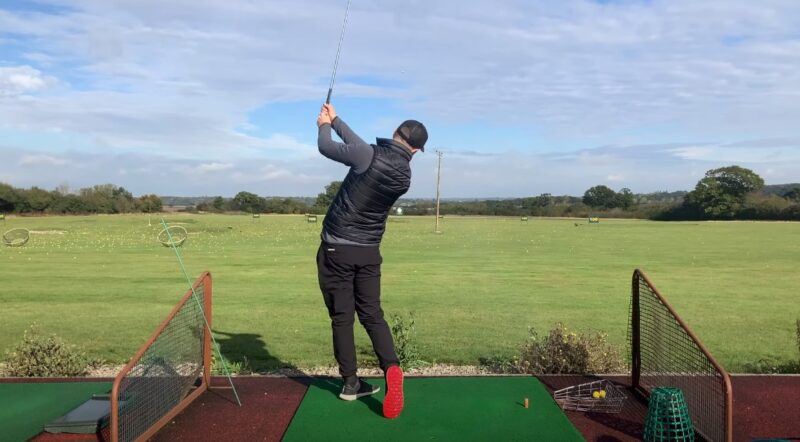
To embed the draw into your muscle memory, here are a few drills you can practice:
The Gate Drill
- Setup: Place two clubs on the ground to form a “gate” just wider than your clubhead, with the path angled for an inside-out swing.
- Objective: Swing through the gate without hitting either club. This drill encourages the correct swing path.
The Towel Drill
- Setup: Place a towel under your armpit on the lead side.
- Objective: Keep the towel in place throughout your swing. This promotes connection between your body and arms, crucial for controlling your swing path.
The Half-Swing Drill
- Objective: Practice hitting shots with half swings, focusing on controlling the club face and swing path. This drill helps build confidence and feel for the shot.
Practice Makes Perfect
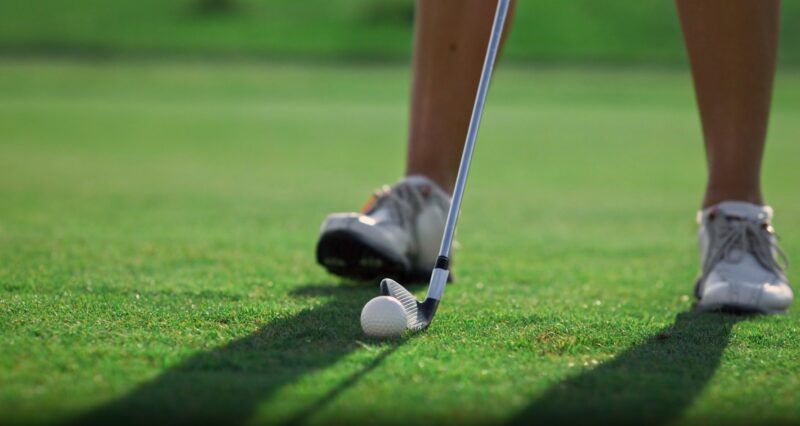
Achieving a consistent draw requires practice. Spend time on the range working on your setup, swing path, and the adjustments mentioned above.
Keep in mind that small changes can have a big impact on your shot shape. Hitting a draw in golf is a skill that combines art and science.
By adjusting your stance, grip, and swing path, you can unlock this powerful shot, adding distance and accuracy to your game.
Whether you’re a beginner or an experienced golfer, mastering the draw is a step toward playing your best golf.
So, grab your clubs and start practicing; the perfect draw is within your reach!
FAQs
How Do I Fix a Hook?
If your draw turns into a hook, check your grip and ensure it’s not too strong. Also, make sure your club face isn’t closing too much at impact.
Can Beginners Learn to Hit a Draw?
Absolutely! With patience, practice, and the right equipment, anyone can learn to shape their shots. Start with small swings and gradually increase as you feel more comfortable.
Is a Draw Better Than a Fade?
Not necessarily. Both shots have their place in golf, and the best players can hit both, depending on the situation. However, a draw typically offers more distance.
Can weather conditions affect my ability to hit a draw?
Yes, weather conditions, especially wind direction and speed, can significantly affect your draw. A strong wind coming from the right can exaggerate the draw, while a left wind can reduce its curve. Adjust your aim and swing accordingly.
Should I change my ball position to hit a draw?
Yes, moving the ball slightly back in your stance can help promote an inside-out swing path, making it easier to hit a draw. However, avoid placing the ball too far back, as it can lead to other issues.
How do I know if my grip is too strong for a draw?
If your shots consistently hook left (for right-handed players) or if you struggle to control the ball’s flight, your grip might be too strong. Try loosening your grip slightly or rotating your hands back towards a more neutral position.
Final Words
Mastering the draw is a journey that can transform your golf game. It requires a blend of technical skill, mental toughness, and continuous practice.
But the rewards are worth it: increased distance, improved accuracy, and the satisfaction of controlling your ball flight.
Remember, every golfer’s swing is unique, so what works for one player might need tweaking for another.
Don’t be afraid to experiment with your stance, grip, and swing path until you find what works best for you.
